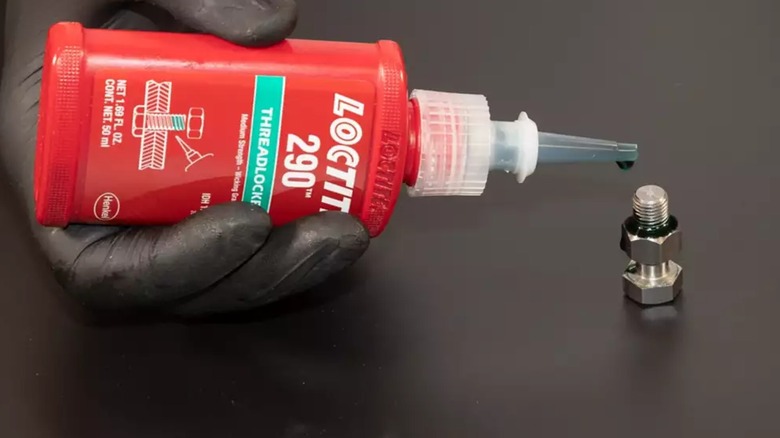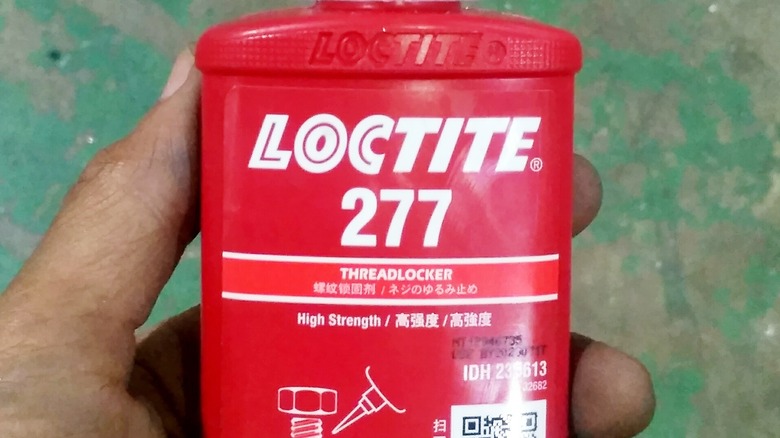What Is Green Loctite Used For?
No one likes to think about having a nut, bolt, or screw spontaneously come loose in an elaborate device or machine. If a single, vital fastener happened to fall out of your current mechanical project, especially while it's already chugging along, the whole thing could end up shaking itself to pieces. You can do your best to tighten every bolt with a strong hand and a sturdy spanner, or even better, a powered tightening tool like an impact driver, but even tool-tightening can only get things so tight, especially in the face of constant vibrational pressure.
If you're looking for that extra bit of security, an assurance that your fasteners absolutely will not come loose without your knowledge, then there are special products available that can do just that. One such product is the green Loctite threadlocker from Henkel, a convenient little adhesive you can drip into just about any threaded fastener to give it that extra bit of grip you're hoping for.
Green Loctite helps to lock preassembled fasteners in place
Green Loctite is a threadlocker adhesive, which means it's meant to be applied directly to the threads of most fasteners. Once it's been applied to the threads and left overnight, it'll cure into a solid state. Once the Loctite has solidified, it becomes an absorbent cushion for the fastener's threads, absorbing the force of external pressure and vibration and keeping it away from the threads. This helps to ensure that, no matter what kind of conditions a fastener is made to endure, it won't vibrate loose of its fitting and endanger the rest of the machine.
Green Loctite is specially designed to be used with preassembled fasteners, such as electrical connectors, set screws, and things you generally may not be able to remove and tinker with easily. Green Loctite has a fairly low viscosity, so as long as there's a little gap you can stick the tip of the bottle into, it can flow into even the tightest of threads and cure. It's also good for sealing up porous spots in powdered metal parts, casings, and welding projects, making it a great addition to a metalworker's toolbox.
Compared to other Loctite colors, Green can be used in tighter confines
Henkel's Loctite products come in four colors: Purple, Blue, Green, and Red. Each of these threadlockers have slightly different applications and strength levels; Purple is for flexible, low-strength metals, Blue is medium-strength and designed to be removable with a bit of elbow grease, and Red is high-strength and semi-permanent.
The element that differentiates Green Loctite from the other colors is its wicking functionality. As we mentioned, Green Loctite has a relatively low viscosity, which allows it to sneak and snake into very cramped, airless spots under and around fasteners. The other Loctite types are thicker and don't flow as easily, so they may not be able to set properly in a preassembled fastener that can't be easily removed.
While Green Loctite is a bit tougher to remove than Blue Loctite, it's easier to remove than Red Loctite, which requires intense heat to undo its curing process. Green Loctite also needs heat to remove, but not nearly as much, and with less physical abrasion.

